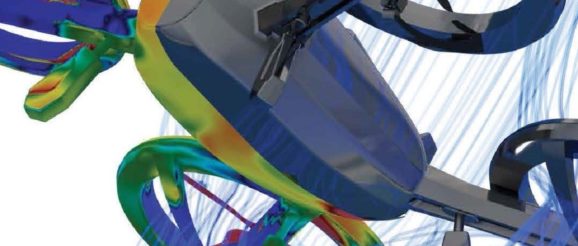Accelerating Discovery and Innovation at the Ohio Supercomputer Center | CIO

For more than 30 years, the Ohio Supercomputer Center has provided supercomputing services, cyberinfrastructure, research and educational resources to a diverse community of state and national users, including universities and industries in Ohio. The center strives to empower its clients with powerful research tools, to partner strategically to develop new research and business opportunities, and to lead Ohio’s knowledge economy.
To carry out this service-driven mission, OSC operates leading-edge high performance computing systems that help researchers accelerate discovery and innovation. That’s the case with the center’s newest and most efficient Dell EMC supercomputer system, the liquid-cooled Pitzer Cluster. Pitzer is designed to power a wide range of research, from understanding the human genome to mapping the global spread of viruses. This type of research requires an enormous amount of computational power — like that of the Pitzer Cluster.
Are you ready for some really big numbers? The theoretical peak performance of the Pitzer Cluster is about 1.3 petaflops, meaning it is capable of performing 1.3 quadrillion calculations per second. To match the potential of what Pitzer could do in just one second, a single person would have to perform one calculation every second for more than 41 million years. The cluster also can achieve 7 petaflops of theoretical peak performance for mixed-precision artificial intelligence workloads.
To achieve performance like this, it takes a lot of computational horsepower under the hood. To that end, the Pitzer Cluster features 260 nodes, including Dell EMC PowerEdge™ C6420 servers with CoolIT Systems’ Direct Contact Liquid Cooling (DCLC) coupled with Dell EMC PowerEdge R740 servers. The cluster has 528 Intel® Xeon® Gold 6148 processors and 64 GPUs, all connected with EDR InfiniBand networking. In all, the system has 10,560 compute cores.
In another claim to fame, the Pitzer Cluster is a great example of how today’s technologies allow HPC-driven organizations to pack more processing power into a smaller footprint, when compared to earlier-generation systems. The use of CoolIT’s modular, rack-based DCLC solution allows increased rack densities, higher component performance potential and better energy efficiency. As a result, Pitzer offers nearly as much performance as OSC’s most powerful cluster but requires less power and takes up less than half the space.
That’s all the technology side of the story. The most exciting side of this story is the groundbreaking research the Pitzer Cluster supports. Scientists, engineers, clinicians and students from throughout Ohio and points beyond put the cluster to work to accelerate academic and industrial research. The supercomputer is built for the challenges of modeling, simulation, machine learning, deep learning and more in natural sciences, engineering and technology, and social sciences.
Across the board, Pitzer is ready for the extremely diverse types of research OSC facilitates — from studies of disease resistance in crops and aircraft crash-worthiness, to genetic mutations and precision medicine. Much of this research focuses on very real and tangible problems. For example, teams of researchers use OSC resources to study harmful algal blooms in Lake Erie.
The Pitzer Cluster builds on an established relationship between OSC and Dell Technologies. In 2016 and 2017, OSC worked with Dell Technologies on the design and deployment of the center’s Owens Cluster, a 23,392-core system based on Dell EMC PowerEdge servers with Intel Xeon processors.
To learn more
